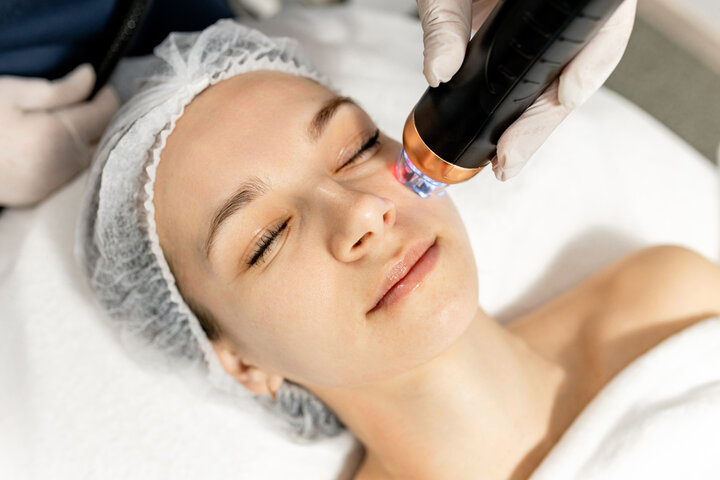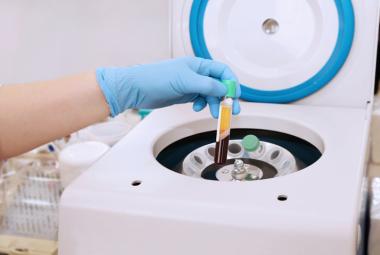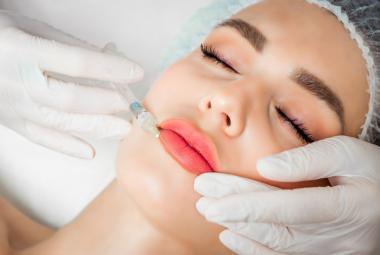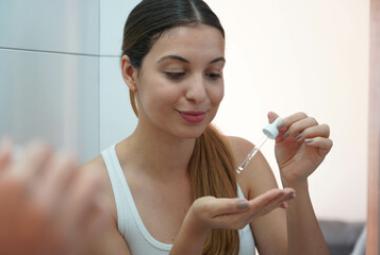Microneedling While Breastfeeding: What You Need to Know
Microneedling is a popular skincare treatment known for improving acne scars, stretch marks, hair loss, and signs of aging. But for women who are breastfeeding, it's natural to have concerns about the safety of elective procedures. Here's a breakdown of what microneedling is, how it works, and what current evidence says about its safety during lactation.
What is Microneedling?
Microneedling is a minimally invasive dermatologic procedure that uses fine needles to create controlled micro-injuries in the skin. These tiny punctures stimulate the body’s natural wound-healing processes, which boosts collagen and elastin production—key components that keep the skin firm, smooth, and youthful (Chu, 2021).
Uses and Benefits of Microneedling
Microneedling is used for a wide range of cosmetic and medical conditions, including:
- Acne scars
- Surgical and traumatic scars
- Stretch marks (striae distensae)
- Melasma and post-inflammatory hyperpigmentation
- Wrinkles and fine lines
- Enlarged pores
- Uneven skin tone or texture
- Alopecia (hair loss), including postpartum hair shedding
- Enhancing the absorption of topical treatments like minoxidil, PRP (platelet-rich plasma), vitamin C, and more (Hou, 2017)
It’s especially appealing to postpartum women because there is minimal downtime and very little systemic absorption—meaning it won’t interfere with breastfeeding when performed safely.
What to Expect: Step-by-Step Microneedling Process
1. Skin Preparation
The skin is first cleansed to remove makeup, oil, and bacteria using a gentle, non-irritating cleanser. This is followed by the application of an antiseptic solution—typically chlorhexidine or an alcohol-based prep—to disinfect the area prior to treatment. These antiseptics are commonly used in medical settings (even C-sections) and are safe for breastfeeding mothers when applied to intact skin. However, these antiseptics should not be applied directly to the nipple or areola, as this may pose a risk of infant ingestion and potential irritation (Li, 2019).
2. Numbing Cream
To minimize discomfort during microneedling, a topical numbing cream is typically applied to the skin and left on for 20 to 45 minutes before the procedure. The most commonly used product is BLT cream, which contains benzocaine, lidocaine and tetracaine. This combination is widely used in dermatology for in-office procedures and is generally considered safe for breastfeeding mothers when used as directed. While BLT cream and other lidocaine-based numbing agents are compatible with breastfeeding, it is important to avoid applying them near the nipple or areola. When applied to intact skin on other parts of the body, these numbing creams are both safe and effective for breastfeeding mothers undergoing microneedling (Kouba, 2016).
3. The Procedure
Once the area is numb, the provider will use a microneedling device—either a pen-style device or dermaroller—to create controlled punctures in the skin. The depth of the needles is adjusted based on the treatment goals--shallow for fine lines, deeper for acne scars. The procedure usually takes 20 to 40 minutes depending on the area treated.
4. After the Procedure Topical Products
Many providers use topical products post-procedure to enhance results. These may include:
Retinoid creams - commonly used to treat acne, fine lines, hyperpigmentation, and uneven skin texture, are generally considered safe during breastfeeding. Because they are minimally absorbed through the skin, only trace amounts enter the bloodstream, leading to negligible levels in breast milk. This low systemic exposure means topical retinoids pose little to no risk to breastfed infants. To read more about retinoids during breastfeeding view our article here.
Vitamin C serums- often used to brighten the skin, reduce hyperpigmentation, and support collagen production, is considered safe during breastfeeding. It has very low systemic absorption when applied to the skin, resulting in minimal to no transfer into breast milk. This makes it a low-risk option for lactating mothers (Butler, 2014).
Tranexamic acid serum -– a synthetic derivative of the amino acid lysine, tranexamic acid can be used topically to treat skin discoloration, dark spots, and uneven skin tone. It, is considered safe during breastfeeding. Pharmacokinetic studies of the intravenous form show that breast milk levels are less than 1% of maternal plasma concentrations—indicating minimal infant exposure. Topical use is expected to result in even lower absorption, making it even safer for lactating mothers (Ahmadzia, 2021).
Hydroquinone cream - Hydroquinone is a naturally occurring compound found in a wide range of plant-derived foods, including vegetables, fruits, grains, coffee, and tea. Medically, concentrated hydroquinone creams are used to lighten skin affected by dark spots (freckles, melasma, senile lentigo, and inactive chloasma). Hydroquinone is absorbed through the skin more than other creams, and while there are no data on its transfer into breast milk, its chemical properties suggest it could be present in the milk. The amount of hydroquinone absorbed after typical topical use is usually no greater than the amount of hydroquinone found in common foods, and it is not known to be highly toxic. Due to lack of data, hydroquinone is not the ideal choice during breastfeeding. That said, limited or one-time use—such as after a microneedling treatment—is unlikely to pose risk, especially if applied away from the breast (Levitt, 2007).
5. Post-Treatment Care
After the procedure, the skin may appear red and feel sunburned for 24–72 hours. Most providers recommend:
- Avoid sun exposure and sweaty workouts for 24-48 hours
- Skip Makeup for at least 24 hours
- Gentle cleansers and moisturizers
- Apply mineral-based sunscreens once the skin calms down. To learn more about safe sunscreen choices during breastfeeding view our article here.
What About the Breast Area?
Microneedling can be safely done on the breast tissue during lactation. The breast is like any other area of skin when it comes to microneedling. We suggest pumping milk rather than feeding at the breast until the skin abrasions heal. The goal of this suggestion it to avoid maternal skin infections by preventing the transfer of bacteria present in the baby’s mouth to the micro-abrasion. Avoid microneedling directly on the nipple and areola.
Treating Larger Areas Safely
You can microneedle small spots or larger areas like the abdomen or trunk (common for postpartum stretchmarks) in a single session. Studies have shown that even large treatment areas are well tolerated, with no significant increase in side effects. There’s no set limit on how much skin can be treated at once, and research continues to support its safe use on larger areas when needed. (Siadat, 2023).
What About Hair Loss and Scalp Microneedling?
Postpartum hair loss is common and usually resolves on its own within a few months. For persistent thinning or female pattern hair loss, microneedling may help stimulate hair regrowth by increasing blood flow and enhancing absorption of treatments like minoxidil or PRP (Fertig, 2018). Taking minoxidil by mouth while breastfeeding has resulted in infant hair growth. However, topical minoxidil has low absorption through the skin and results in very minimal levels in breast milk, so the risk to a nursing infant is believed to be low for products used only on the skin.
Side Effects to Know About
Microneedling is generally well tolerated, with side effects that are usually mild and short-lived. These may include:
- Redness
- Mild Swelling
- Skin dryness or flaking
- Mild discomfort or tenderness
- Temporary darkening of the skin in certain areas
More serious—but rare—complications can include:
- Persistent pigmentation changes
- Scarring
- Granulomatous reactions
- Skin Infection
- Allergic reactions (especially in people with metal sensitivities) (Chu, 2021)(Siadat, 2023)
If you have concerns about medications used during or after microneedling—like ibuprofen, steroids, or antibiotics—be sure to check out our mobile app, MommyMeds, for reliable, up-to-date safety information while breastfeeding.
Final Thoughts
Microneedling offers a great low-risk option for postpartum skin and hair concerns—even while breastfeeding. The procedure works locally on the skin, with minimal systemic absorption and little to no impact on breastmilk. With the right precautions, microneedling can be a safe and confidence-boosting treatment for new moms.
Nichole Campbell, MSN, APRN, NP-C
Katie Boatler, RN, BSN
Kaytlin Krutsch, PhD, PharmD, MBA, BCPS
References
- Ahmadzia, H.K., et al., Optimal use of intravenous tranexamic acid for hemorrhage prevention in pregnant women. Am J Obstet Gynecol, 2021. 225(1): p. 85 e1-85 e11.
- Butler, D.C., M.M. Heller, and J.E. Murase, Safety of dermatologic medications in pregnancy and lactation: Part II. Lactation. J Am Acad Dermatol, 2014. 70(3): p. 417 e1-10; quiz 427.
- Chu, S., D.P. Foulad, and N. Atanaskova Mesinkovska, Safety Profile for Microneedling: A Systematic Review. Dermatol Surg, 2021. 47(9): p. 1249-1254.
- Fertig, R.M., et al., Microneedling for the treatment of hair loss? J Eur Acad Dermatol Venereol, 2018. 32(4): p. 564-569.
- Hou, A., et al., Microneedling: A Comprehensive Review. Dermatol Surg, 2017. 43(3): p. 321-339.
- Kouba, D. J., M. C. LoPiccolo, M. Alam, J. S. Bordeaux, B. Cohen, C. W. Hanke, N. Jellinek, H. I. Maibach, J. W. Tanner, N. Vashi, K. G. Gross, T. Adamson, W. S. Begolka and J. V. Moyano (2016). "Guidelines for the use of local anesthesia in office-based dermatologic surgery." J Am Acad Dermatol 74(6): 1201-1219.
- Levitt, J., The safety of hydroquinone: a dermatologist's response to the 2006 Federal Register. J Am Acad Dermatol, 2007. 57(5): p. 854-72.
- Li, J. N., R. I. Nijhawan and D. Srivastava (2019). "Cutaneous Surgery in Patients Who Are Pregnant or Breastfeeding." Dermatol Clin 37(3): 307-317.
- Siadat, A., R. Moeine, F. Iraji, G. Faghihi and S. M. Hosseini (2023). "Evaluating the efficacy of microneedling technique in treating striae alba lesions." Arch Dermatol Res 315(7): 2075-2078.







